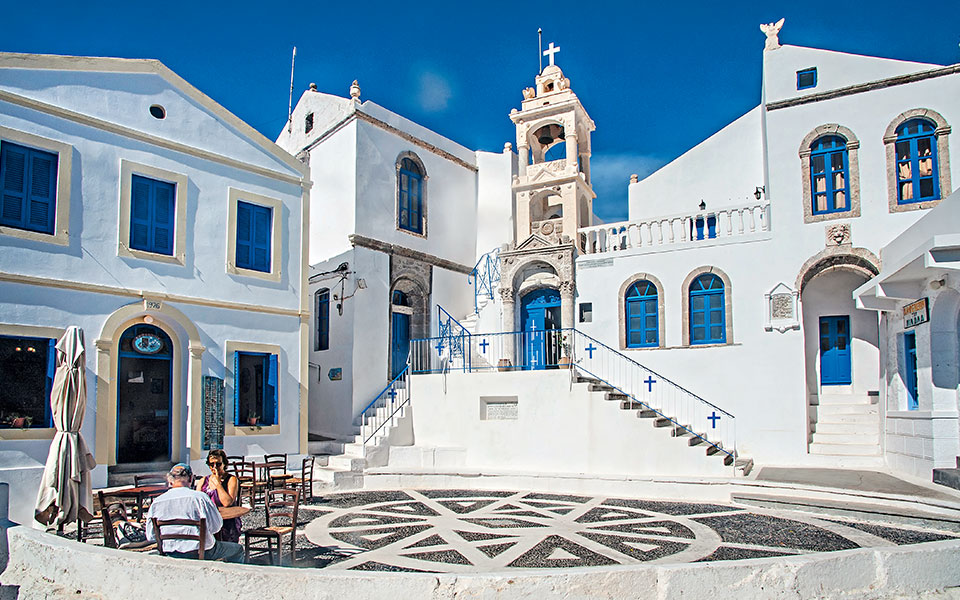EXPLORE
CENTER OF TOWN: Spend some time in Ilikiomeni Square at the heart of Mandraki, Nisyros’ small capital, with its giant ficus tree, its tavernas and its pastry shops. In the charming, bougainvillea-adorned streets leading off it, you’ll come across elegant houses – some inhabited by people who tired of city life, whitewashed churches, workshops and stores, elderly ladies knitting on stoops, and dozens of cats living large.
SACRED PLACE: The 15th-c. Panaghia Spiliani Monastery stands watch over Mandraki and appears to hover in the night-time sky like an illuminated apparition. You’ll have to climb 130 steps to reach it, but it’s worth it. With an intricately carved wooden iconostasis from 1725 among its treasures, it is considered one of the most important monasteries in Greek Orthodoxy and attracts pilgrims from all over Greece.
The celebrations marking the Dormition of the Virgin on August 15 is a two-day affair that culminates in a panigyri, a festival with food, drink and dancing, including one folk dance led by a woman holding aloft a collection cup for donations, before everyone sits down to a meal of chickpea stew at the village’s main square.
Info
- Area: 41 sq. km.
- Population: 990 (2011 cansus)
- Distance: 186 (sea milles from Piraeus)
- Highest Peak: 698m (Profitis Ilias)
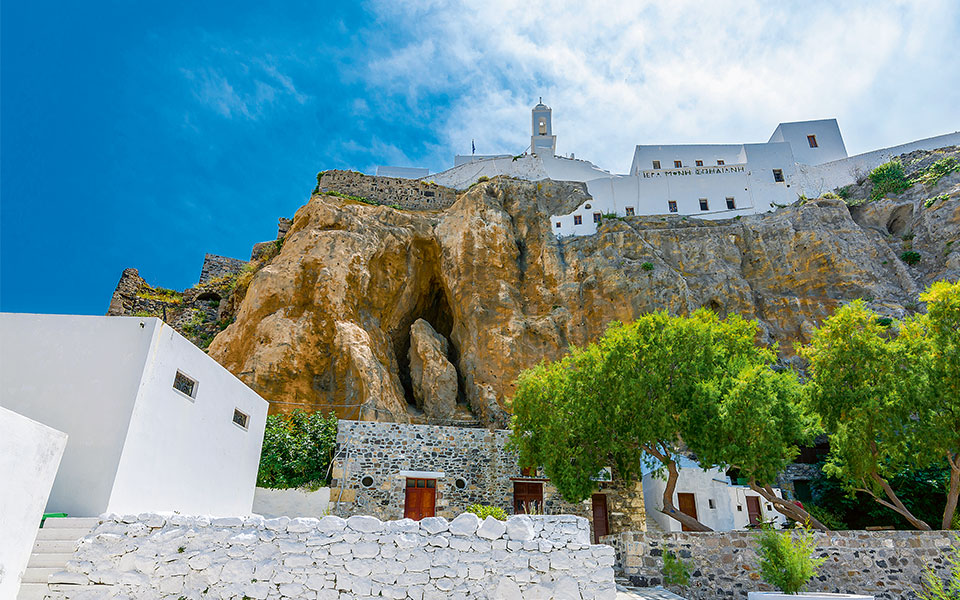
© Clairy Moustafellou
THE VIEW FROM ABOVE: The imposing Dorian-built fortress of Paleokastro, which rises up above Mandraki, makes you wonder how the ancients managed to move and stack up such enormous stones. This is a great place to enjoy a sunset or a full moon.
A VILLAGE REBORN: The village of Emporios, perched high on the caldera wall and invisible from the sea, was abandoned after a destructive earthquake in 1933, but has started to rebound in recent years; many of its traditional homes are being renovated by new owners to be used as either private dwellings or as commercial guesthouses. The village is known for its two excellent tavernas and a natural sauna in a small cave at its entrance.
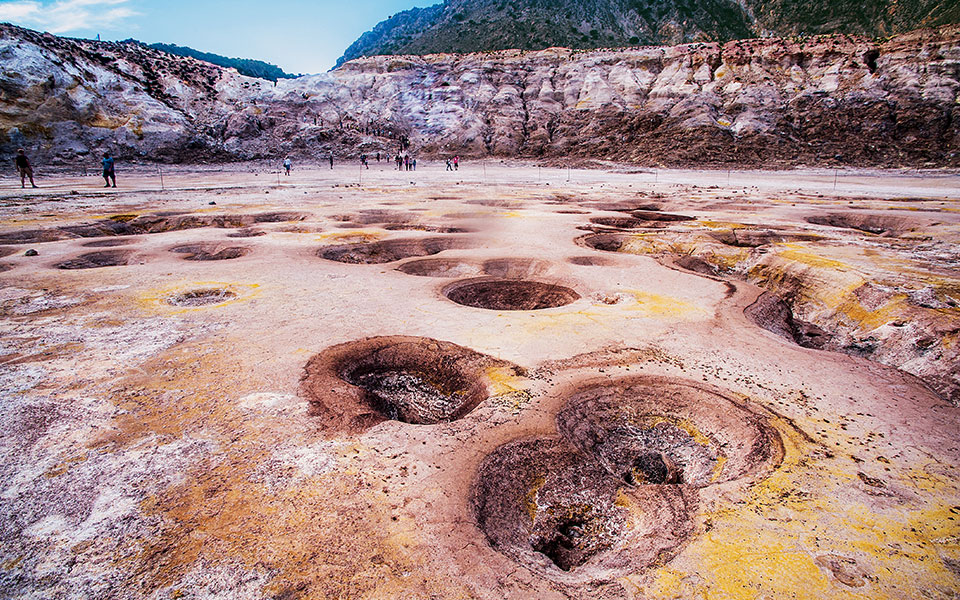
© Clairy Moustafellou
FOCUS: THE SLEEPING GIANT
Nisyros is Greece’s youngest volcano, and still active (though not erupting). Ancient Nisyrians chose to believe that their island was a piece of the nearby Kos, which angry Poseidon, the god of the sea, had thrown on the giant Polybotes during the Gigantomachy, trapping him underneath, causing him to groan and puff in anguish for eternity in his efforts to break free. How else could they explain the fumes that rose from the earth and the regular earthquakes?
Science, of course, gave us a more plausible explanation; that of a volcano that began to emerge from the Aegean Sea about 150,000 years ago and that eventually, following a series of eruptions, acquired its craters and took the shape and size we know today.
A walk around the approximately 4,000-5,000 year-old Stefanos is an amazing experience. This is one of the largest and best-preserved hydrothermal craters in the world, with a diameter ranging from 260m to 330m and a depth of 27m, with an otherworldly surface of hydrogen sulfide-puffing fumaroles (the holes in the ground). This landscape has been a source of inspiration for many visiting artists, such as film directors, photographers and painters, over the years.
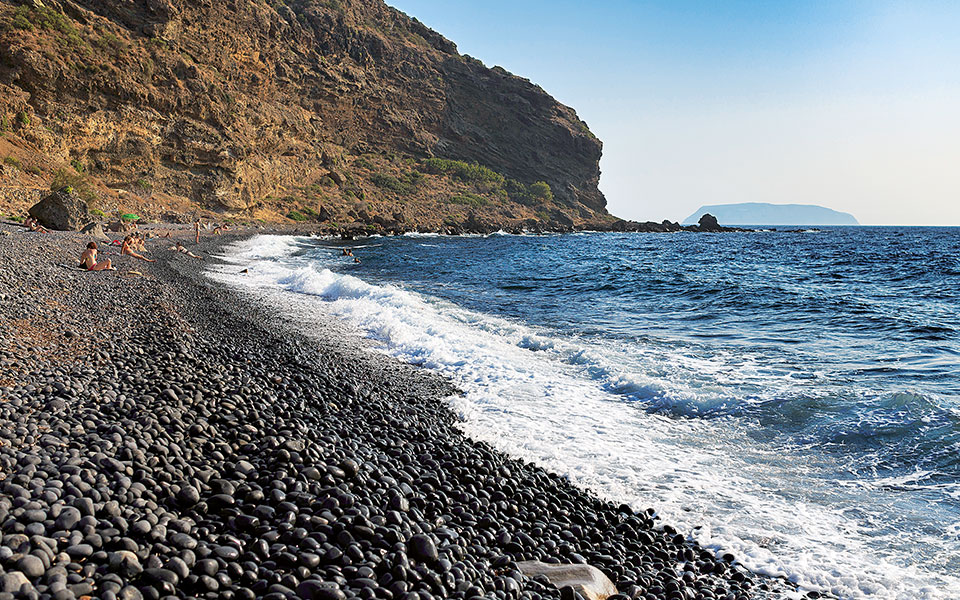
© Nicholas Mastoras
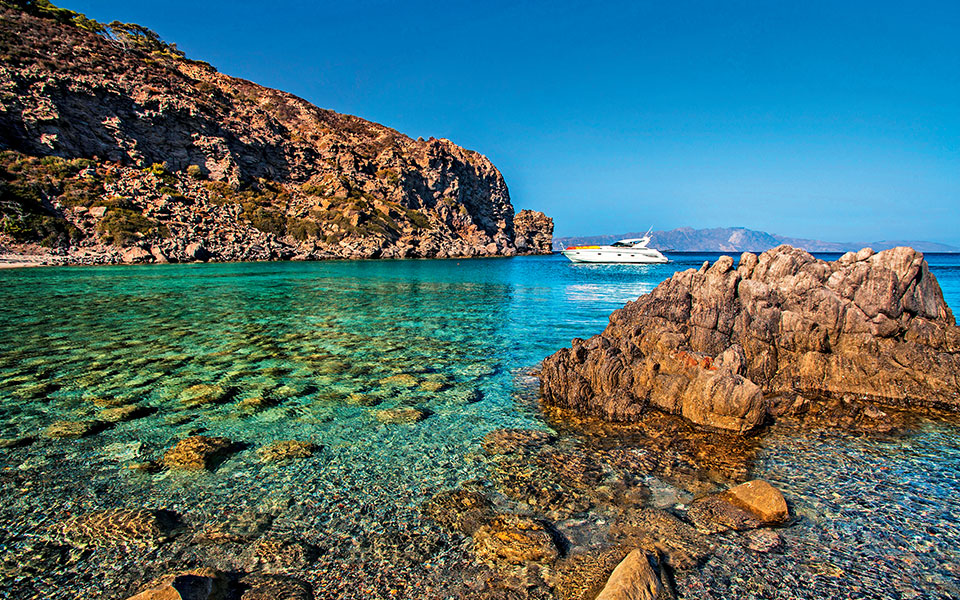
© Clairy Moustafellou
EXPERIENCE
FUN AND KNOWLEDGE: The village of Nikia, on the opposite rim, charms visitors with its winding cobblestone paths and its picturesque main square, Porta. Stop here at To Kafeneio tou Nikola for coffee or a drink with meze, or for some homemade soumada, a sweet, non-alcoholic almond drink served with ice, and take in the amazing sea views.
Nikia also boasts a Volcanological Museum, the only one of its kind in Greece, located at a prime spot on top of the caldera and offering panoramic views of the Stefanos crater. Everything you ever wanted to know about volcanos, and Nisyros in particular, can be found here, along with a unique collection of 250 volcanic rocks.
QUARRY ISLAND: The nearby islet of Gyali, a designated Area of Exceptional Natural Beauty, has been shaped by both volcanic and human activity over the millennia. People have been extracting perlite, obsidian and pumice from here for thousands of years, and archaeologists have found traces of a late-Neolithic era settlement, remains from a Bronze Age forge and an ancient cemetery. If you want time to explore it, take the morning boat with the quarry workers.
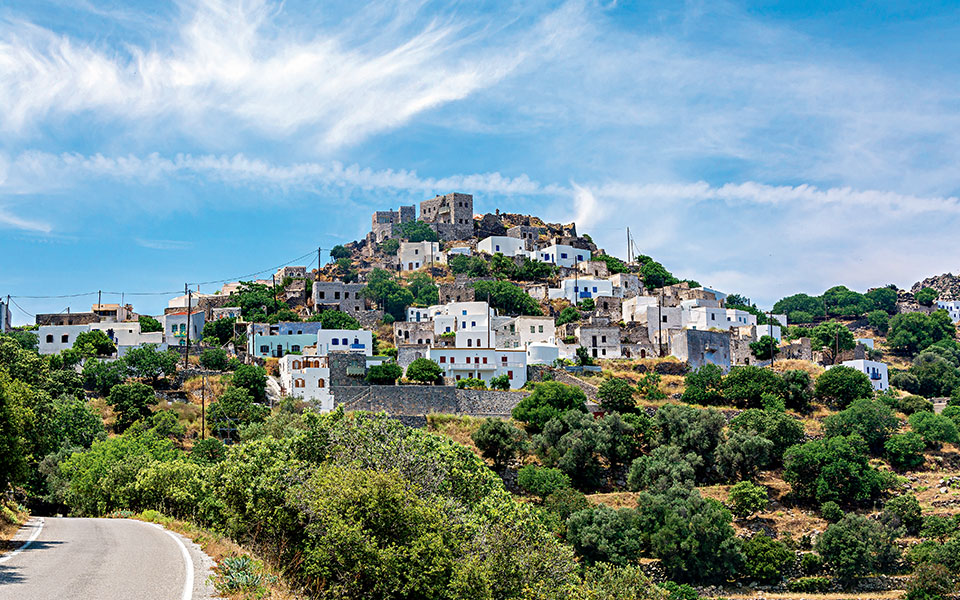
© Shutterstock
BEST SWIMS: Avlaki, Nisyros’ old harbor, may be long-deserted, but its old quay offers plenty of space to lay down your towel and enjoy one of the best swims on the island, in beautiful, clear waters. It’s a 25-minute drive on a tricky downhill road from the nearest village of Nikia, so make sure to bring everything you need.
Visitors staying in Mandraki, on the other hand, don’t need a car to get their feet wet. Located below the monastery, Hohlaki Beach (with its big blue-black stones) can be reached on foot. The sound of big volcanic pebbles rolling down the shore as the waves retreat is so soothing, you can meditate to it. Plus, the sea is crystal clear. Be sure to bring water shoes if your feet are sensitive and plenty of sunscreen; shade is limited.
SOME LIKE IT HOT: The natural hot baths, located approximately 1.5km from Mandraki, is a quintessential Nisyros experience. The Municipal Bath House (Open Mon-Sun 07:00-09:30 & 17:00-19:30, Admission €5 for 20’) has been around since the 19th century and still attracts bathers young and old, who soak in its 45°C healing waters to relax and to treat a variety of ailments. The kafeneio on the ground floor serves all kinds of beverages and snacks if you feel peckish.
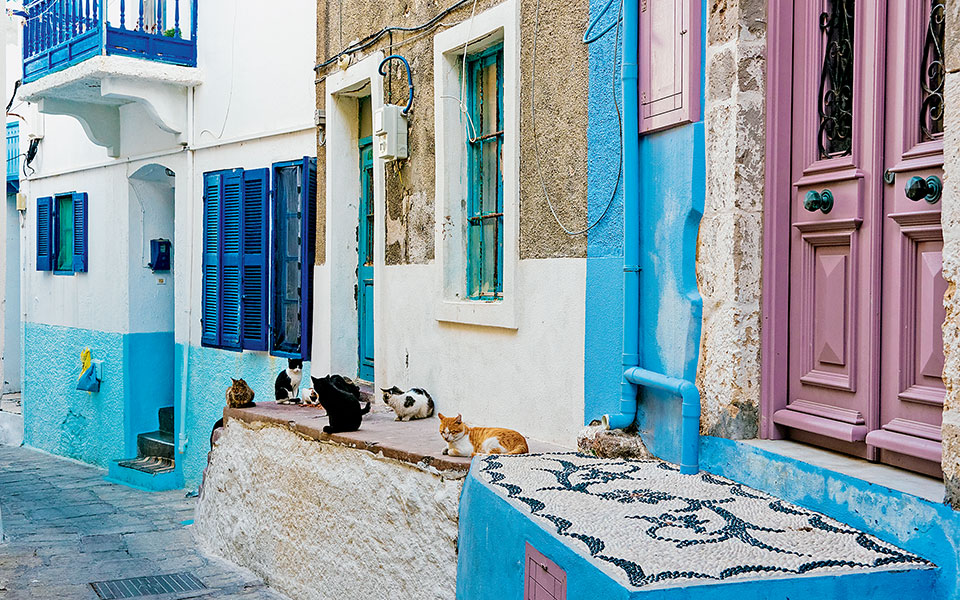
© Shutterstock
TASTE
LOCAL TREATS: While in Nisyros, don’t miss out on delicacies such as pythia (chickpea fritter, the Greek version of falafel), usually served with an almond-and-garlic sauce; boukounies (pork chunks fried in lard) and kapama (kid goat stuffed with rice).
RECOMMENDED TABLES: In Emporios, Balkoni tou Emporiou is run by a lady called Katina who prepares traditional dishes. The tables at the edge of the veranda are particularly popular, as they offer a great volcano view. A relatively new entry to the village is Aposperi, a modern kafeneio with a great ambiance, amazing view, and excellent meze, spirits and wines produced by Kallia and her father Vangelis.
In Mandraki, under the shade of the trees on Ilikiomeni Square, Irini serves homestyle food as well as great desserts.
THE BAR SCENE: Nisyros’ modest nightlife scene is concentrated at the point where Mandraki spills out to the sea. At the four or five bars that rub shoulders in this tiny version of Mykonos’ Little Venice, thirsty visitors will be treated to good jazz, refined rock and modern Greek folk music as they chill out within meters of the sea. There’s a Greek dive bar, too, and, while it may not gel with the overall atmosphere, it does provide an opportunity for the night owls who like to catch the cheese pies and buns hot out of the oven of the adjacent bakery as the sun begins to rise.

